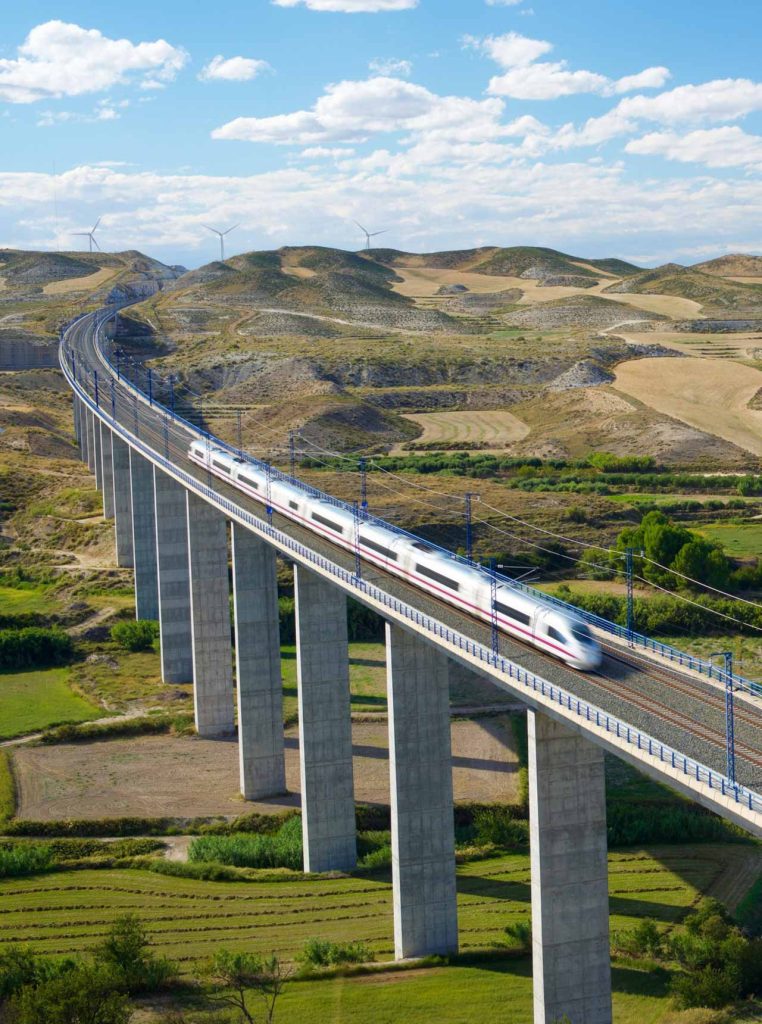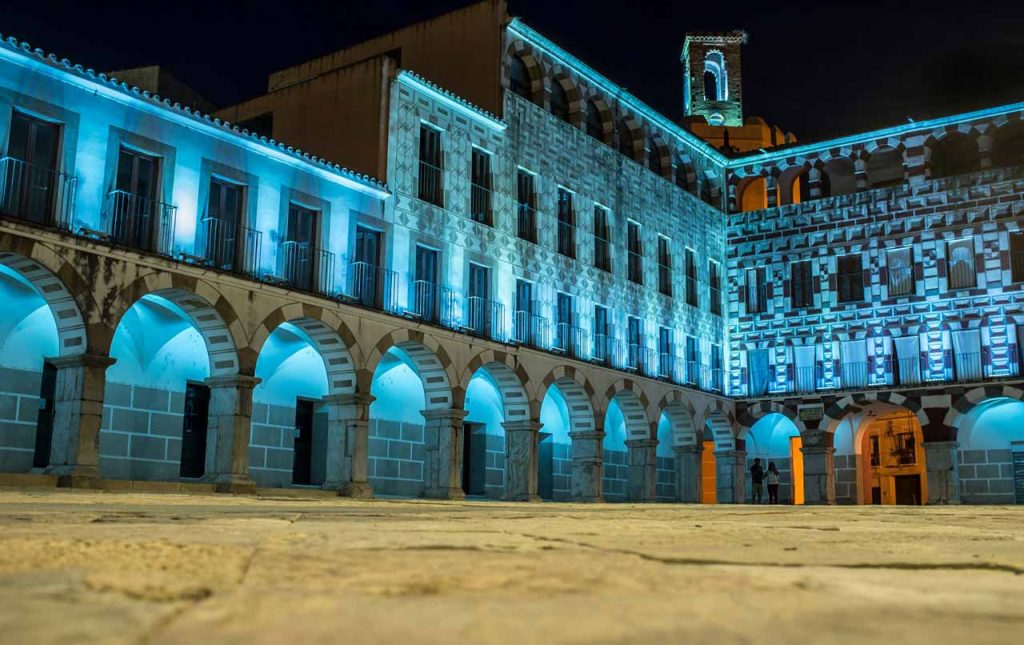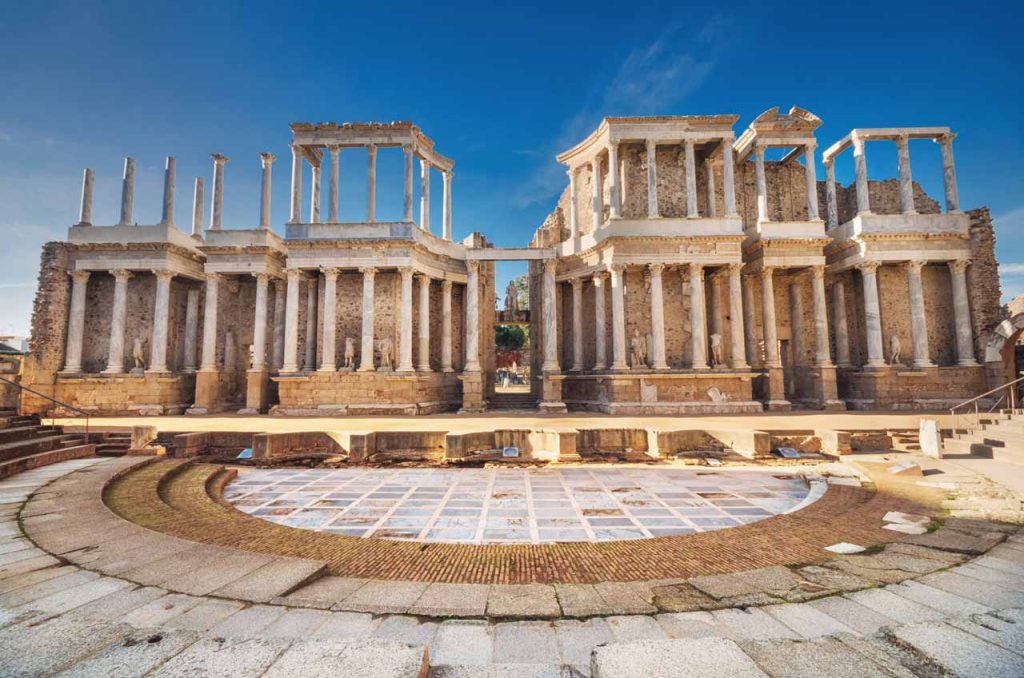Tour Date: 28 February to 9 March, 2024
Location: Spain
The PTG slogan is “rail and culture” and that is exactly what this tour sets out to achieve, with a combination of trains, historic towns and sights, beautiful scenery and stunning hotels and Paradors.
With options to travel out from the UK by rail or air, we gather together in Madrid before setting out on our rail tour of historic South-West Spain, taking in the passenger railways from Madrid down to Zafra and visiting some of Spain’s most important historic locations, including some that are well off the beaten track. We also slip into Portugal to visit a town built on a hill and fortified as a defensive measure against attacks from Spain.
As you would expect from an “In style” tour, we stay at top quality hotels, including the Paradors in Mérida (a former 18th century convent), Zafra (a majestic castle, formerly the palace of the Dukes of Feria) and Plasencia (the stunning 15th century Santo Domingo Monastery) and in Caceres at the 16th century Oquendo Palace. In Madrid we will stay at a good quality hotel near Atocha station. This is a half-board tour and we will have dinner in our hotels or good local restaurants each night.
For rail fans we cover the passenger lines between Madrid and Zafra, using the high-speed line south from Madrid to Puertollano where catch a broad-gauge train along the sparsely served line westwards to Mérida. As well as the other main lines from Mérida south to Zafra and north to Plasencia and eventually back to Madrid on this classic route, we have the opportunity to take in the branches from Mérida to Badajoz and from Caceres to Valencia de Alcántara. A new high-speed line, Spain’s first broad-gauge high-speed line, is being built alongside the classic line, and is particularly visible on the Caceres – Mérida – Badajoz route, so this may be a last chance to travel on the classic lines if the new line has not already opened. We also include a visit to the Rio Tinto Mine Museum, south of Zafra, with its own railway, which of course we will travel on. We hope to have a steam-hauled train here.
At this time of year, the weather should be comfortable and without the excessive heat experienced in the summer months.
Tour Highlights
- Some dinners and lunches included
- First class train travel where possible
- Historic towns
- Staying in Paradores
- Local guides
- Very little coach travel
Tour Itinerary

Day 1 Wednesday 28th February, 2024
We will be offering both flight and rail options for travelling to Madrid. We will meet up at our hotel near Atocha station for the first night.

Day 2 Thursday 29th February (B,D)
Leaving Madrid, we head south on the high-speed line to the town of Puertollano. Here we join a train on the very scenic, but sparsely served, classic line heading westwards to our base for the next two nights, the UNESCO listed town of Mérida. This line meanders through rolling countryside with few settlements of any great size, so it is easy to understand why the eastern end of the line has only two trains per day. We soon find ourselves following the River Guadiana into Mérida, and have a brief view of the Roman Circus, one of many Roman remains in Mérida, a town founded by the Romans in the 1st century B.C. Mérida station is an important railway junction, with lines from four directions (north, south, east and west) all crossing here, though the line from Puertollano is the only route to enter the station on the eastern approach. We arrive at the parador mid-afternoon, so you will have free time to enjoy the facilities in the parador or begin exploring the town. The parador is very well-located for the historic centre. Over the course of its history, the building that now houses Mérida Parador has had different uses, including as a convent, a hospital, an asylum and even a jail. Today it still houses historical remains dating back 2000 years. The interior cloister and Jardín de Antigüedades (Garden of Antiquities), a collection of Mudejar, Roman and Visigothic archaeological pieces, are both truly fascinating locations. The Parador stands in a peaceful square decorated with orange trees. Welcome dinner in the parador.
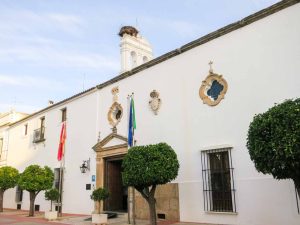
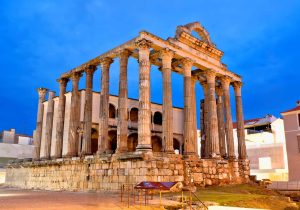
Day 3 Friday 1 March (B,D)
This morning we will meet our local guide Javier, who will also be joining us on certain other days. Our guided tour will begin inside the parador, as it is an important historic building in its own right. From here Javier will lead us on a walk around Mérida’s historic sights which you will be able to visit later in your free time (most are included in the Monuments Pass), but the highlight of the tour is the visit to the Roman theatre and amphitheatre. We can also find a 792-metre-long Roman bridge over the River Guadiana, the Temple of Diana and the Aqueduct of Los Milagros. The National Museum of Roman Art, with over 36,000 exhibits from the local area, is well-work visiting. Another highlight is the Alcazaba, a 9th century Muslim fortification, the best-preserved example in Spain. We will visit the theatre and amphitheatre as part of the morning guided walk, and the afternoon will be free so that you can visit the other historic sites at your own pace. Dinner in the parador.
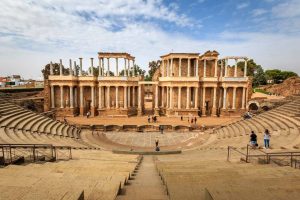
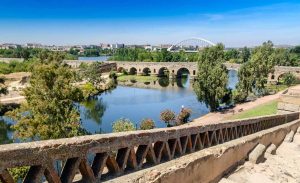
Day 4 Saturday 2 March (B,D)
Today we have a free morning for final explorations in Mérida and after lunch we catch a train south to Zafra. Zafra Parador will be our home for the next two nights. The building was originally a majestic castle dating from the 15th century and is itself one of the highlights of the holiday, with well-appointed rooms, a swimming pool and a beautifully maintained garden. Many of the rooms face onto an attractive inside courtyard, as being a former castle, the outer walls do not have many windows!
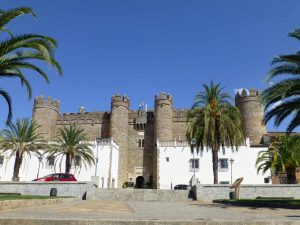
Day 5 Sunday 3 March (B,L,D)
A very full day today, as we head south from Zafra by coach to visit the Rio Tinto Mining Park. Accompanied by an English-speaking guide from the park, we will spend the day visiting the different sections of the park-museum, including the train that runs through incredible landscapes, a river unique in the world for the colour and composition of its waters, a territory that shows the traces of 5,000 years of mining activity, a museum full of cultural heritage jewels, a house that transports us to Victorian England … even a walk on another planet, Mars, without leaving Earth! Today’s train should be steam-hauled. Lunch in a local restaurant is included and dinner is in the parador.
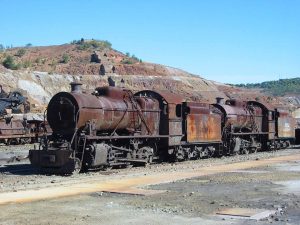
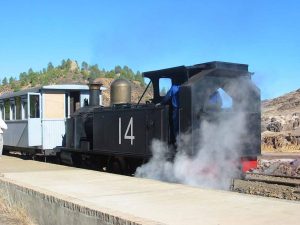
Day 6 Monday 4th March (B)
We have a free morning to explore Zafra. Look out for the attractive Plaza Grande and the Plaza Chica. After lunch we return to Zafra station for our train to Caceres. On arrival in Caceres, we transfer to our hotel, and after time to settle, we have time to explore the historic centre.
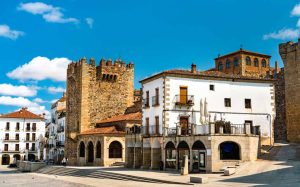
With sunset at around 7 pm, the old town is illuminated, and looks quite splendid. Though it was founded by the Romans, we can still see architecture of many other cultures that occupied the city, including the Moorish city walls and Renaissance and Gothic architecture. The town can really be divided into three – the ancient walled town, the old town just outside the wall and centred on the Plaza Mayor with the typical narrow, winding streets, and the modern town that has grown over the years.
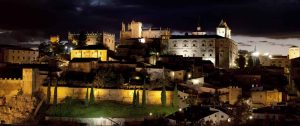
Day 7 Tuesday 5th March (B)
Today we visit Trujillo by coach, on the Route of the Conquistadors, and once again accompanied by Javier. Highlight is Trujillo Castle, built in the 13th century on the site of an Arab fortress at the highest part of the town. It also boasts an important group of churches and manor houses near the central Plaza Mayor. This part of Spain is famous for its wine and Iberian ham, and we will stop off at a local winery for a visit and the chance to taste some of their wine.
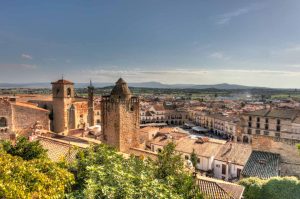
Day 8 Wednesday 6th March (B,L)
Portugal calls today, as we travel west over the border to the hilltop village of Marvão, on the highest point of the Serra de São Mamede, overlooking the Spanish border. Only accessible from the east, due to steep slopes on the other sides, it played a fundamental role in major military conflicts, including the fight between the king D. Dinis and his brother D. Afonso (1299), the Dynastic Crisis of 1383-85, the Wars for the Restoration of Independence (1640-68), the War of Spanish Succession (1704-12) and the Peninsular Wars (1807-11).
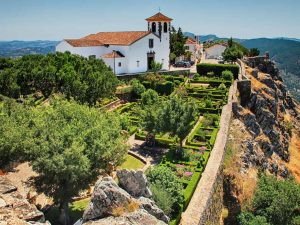
Inside the walled village you find a fascinating small town, and spectacular views in all directions. Marvão railway station used to be the border station on the line used by the international Lusitania train until it was withdrawn and the line closed a decade ago. However, the Spanish side of this line is still open, albeit with a very limited service, and we shall catch a train back to Caceres from the station on the Spanish side of the border, Valencia de Alcántara.
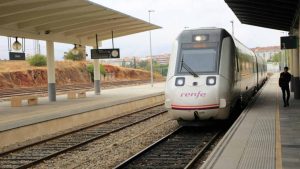
Day 9 Thursday 7th March (B)
We head north mid-morning to our final historic town, Plasencia, a walled market town. It is best known for the 12th century double line of walls, including 68 towers and six gates. We can also see the remains of a Roman aqueduct, and, in the old quarter, palaces, ancestral homes and magnificent cathedrals.
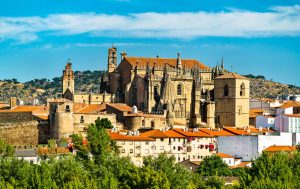
Our home for the next two nights is Plasencia Parador, located in an old convent and renowned for its excellent food. The building is quite stunning, and it is a fitting location to end our tour of Historic South-West Spain. After arriving, you will have time to relax and enjoy the Parador or explore the small historic centre.
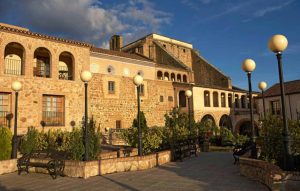
Day 10 Friday 8th March (B,D)
A more relaxing day to finish, but we will still explore some of the area’s history. Joined by Javier for the last time, our coach will take us first to Yuste Monastery. This Hieronymite monastery was founded in 1408-1414 under the patronage of the Infante Ferdinand, brother to Henry III. It has one gothic and one renaissance cloister, both still standing since the church was built in 1508-1525. Under the Confiscation Law of 1836, the complex was sold and began to fall into disrepair until it was purchased in 1857 by the Marquis of Mirabel who began to restore it and opened a new church on the site.
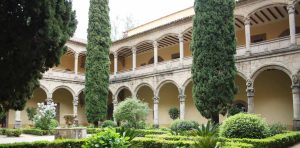
We then move on to the charming village of Garganta de Olla, to see very well-preserved examples of popular architecture and some buildings that date back to the days of the emperor, such as the brothel used by his soldiers. We return to Plasencia to give you time to explore the historic centre a little more or simply enjoy the ambience and facilities of this stunning Parador. Farewell Dinner in the Parador.
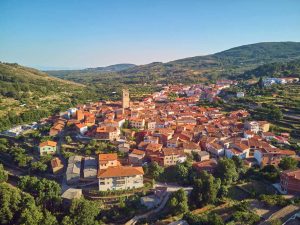
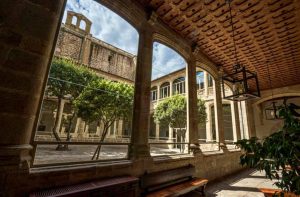
Day 11 Saturday 9th March (B)
This morning we return to Madrid by train in time for lunch and to catch afternoon flights home.
By its nature, on this trip you need to be able to walk around locations with steep hills, stairs and cobbled streets, and be able to lift your luggage on and off trains.
Prices & Options
Holiday Prices (per person)
- From Heathrow (BA 11:30): £2,275
- From Gatwick (Iberia 10:40): £2,275
- From Stansted (Ryanair 12:45): £2,260
- From Luton (Easyjet 13:10): £2,250
- From Manchester (Ryanair 10:15): £2,295
- From Edinburgh (Easyjet 12:00): £2,295
- From St Pancras (Eurostar): POA
- Join in Madrid: £2,045
Options
- Single use room Supplement: £490
- No “From Home” service: deduct £75 from with flight prices
Deposit
- Travelling by air: £500
- Overland by rail: £800
- Own travel: £300
Transport & Accommodation
Travel from UK
in 2024 it is expected that there will be direct flights, to Madrid, from Heathrow, Gatwick, Stansted, Bristol, Manchester and Edinburgh. Also travel by rail from London St Pancras.
Hotels
- Radisson RED Madrid (1 night)
- Mérida Parador, Mérida (2 nights)
- Zafra Parador, Zafra (2 nights)
- Hotel NH Collection Palacio de Oquendo, Caceres (3 nights)
- Plasencia Parador, Plasencia (2 nights)
Gallery

